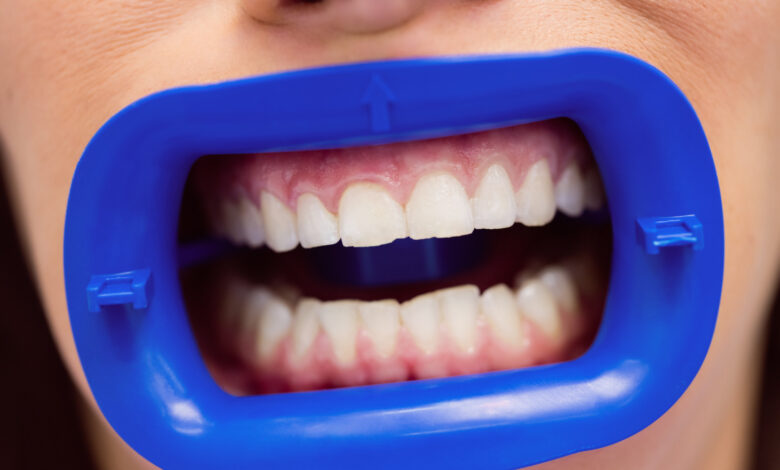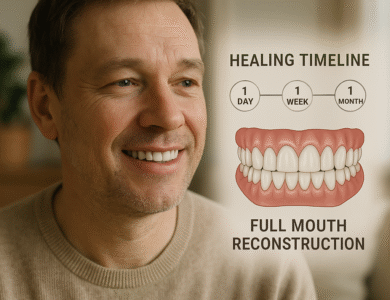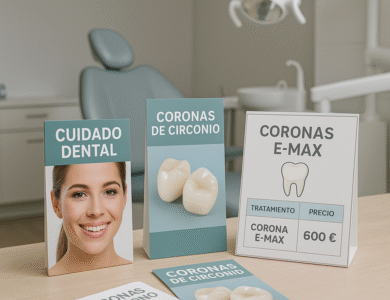
Gum Recession
Periodontitis , also known as gum recession or gum disease , is a critical gingivitis that destroys the soft tissue around the teeth and, if left untreated, can eliminate the bone that supports a person’s teeth. Gum recession can cause teeth to lose tension or cause tooth loss.
What is Gum Recession?
Gingival recession is generally considered a common but completely preventable issue. It is mostly caused by poor oral care and cleaning. Brushing one’s teeth at least twice a day, using dental floss daily, and having regular dental examinations both reduce the likelihood of developing periodontitis (gum recession) and greatly increase the opportunity for successful treatment.
Causes of Gum Recession
Gum recession ( periodontitis in many cases ) begins with the formation of plaque, which is essentially a sticky film resulting from microbes. If this plaque is left untreated, it can eventually progress to periodontitis .
When sugars and starches in foods interact with microbes in a person’s mouth under normal conditions, plaque forms on the teeth.
Brushing your teeth twice a day and flossing once a day can remove plaque formation, but plaque quickly forms again.
Plaque remaining on the teeth can solidify below the gum line and become tartar, that is, dental stone. Tartar removal is more difficult than plaque and is full of bacteria. Apart from gum recession, the longer tartar and plaque remain on the teeth, the more damage it can cause. It is not possible to remove dental tartar by brushing and flossing. An expert dental cleaning is needed to purify it.
Plaque can cause gingivitis, the most mild form of gum disease. Gingivitis is a name given to the irritation and inflammation of the part of the gum tissue around the base of the tooth. Gingivitis can be reversed with expert treatment and good oral care at home.
Ongoing gingivitis may be the cause of gum recession . This causes pockets to form between the gums and teeth, which are filled with bacteria, tartar and plaque. Gradually, these pockets become deeper and fill with more bacteria. If these deepening inflammations are not treated, it causes both tissue and bone loss and may eventually lead to the loss of one or more teeth. Ongoing chronic inflammation can put a strain on the person’s immune system.
Gingivitis, medications that cause dry mouth or gum discrepancies, malnutrition, including vitamin C deficiency, diabetes, hormonal changes related to pregnancy or menopause, genetics, leukemia, HIV/AIDS, cancer treatment, obesity, smoking or drug use. Bad oral habits such as dental use can increase the risk of gum recession.
Symptoms of Gum Recession
Early intervention increases the possibility of reversing the damage caused by gum recession . The person needs to have regular dental check-ups. People who notice any signs of gum recession should make an appointment with the dentist as soon as possible. In case of gum recession :
- Puffy or swollen gums
- Shiny or dark red or purplish gums
- Bad breath
- Painful chewing
- New spaces developing between teeth
- Gap between your teeth and gums
- Gums that pull down, making the teeth look longer than standard
- Spitting up blood while brushing or flossing
- Gums that are sensitive when touched
- Pink toothbrush after brushing
- Teeth that have lost their tension or tooth loss
- A difference in the way the teeth fit together when bitten
- Symptoms such as simply bleeding gums are observed.
Diagnostic Methods of Gingival Recession
Gum recession and, if so, how serious it is. During this examination, the dentist will review the person’s medical history to identify factors that may contribute to symptoms, such as smoking or taking certain medications that cause dry mouth.
It will control the person’s mouth and simple bleeding to control tartar and plaque formation. He or she will measure by placing a dental probe next to the tooth to test the pocket depth of the groove between the teeth and gums in various parts of the mouth . In a healthy mouth, the pocket depth is generally between 1 and 3 millimeters. Pockets deeper than 4 millimeters may indicate the presence of periodontitis . Pockets deeper than 5 millimeters cannot be cleaned well and may require intervention.
Dental x-rays will be taken to check for bone loss in areas where deeper pocket depth is observed. After these steps, the dentist can assign a step and level for gum recession depending on the severity of the disease, the complexity of the treatment, the risk factors present and the person’s health .
Treatment Methods for Gum Recession
Gingival recession treatment can be performed by a dental hygienist or dentist. The purpose of the treatment is to thoroughly clean the pockets around the teeth and prevent further damage to the surrounding bone. For successful treatment, however, it is necessary to implement a good daily oral care routine, manage health conditions that may affect dental health, and stop tobacco use.
If gingival recession has not developed, the treatment process can be completed with non-surgical treatments and less invasive methods. For this purpose, removal of tartar and microbes from the tooth surface can be achieved with the use of tools, laser or ultrasound devices.
Smoothing the root surface can prevent further tartar and bacterial buildup and eliminate bacterial byproducts that delay gum recession or reattachment to the tooth. Topical or oral antibiotics can help control bacterial inflammation.
Topical antibiotics may involve applying antibiotic mouthwashes or gels containing antibiotics to the space between your teeth and gums or into pockets after a deep cleaning. However, oral antibiotics may be necessary to completely eliminate the bacteria that cause inflammation.
However, if the person has advanced gum recession, dental surgery may be required for treatment. Accordingly, tissue shifting surgery, that is, pocket reduction surgery, can be performed. The dentist makes small incisions in the gum so that some of the gum tissue can be lifted back and exposed to the roots for more effective cleaning and root planing.
Since gum recession causes extensive bone loss, the underlying bone may need to be resized before the gum tissue is sutured in place.
When a person loses gum tissue, the gums recede. Some of the damaged soft tissues may need to be strengthened. For this purpose, soft tissue transplantation procedures can be performed. This usually occurs by removing a small amount of tissue from the person’s palate or using tissue from another donor source and transferring it to the affected area.





